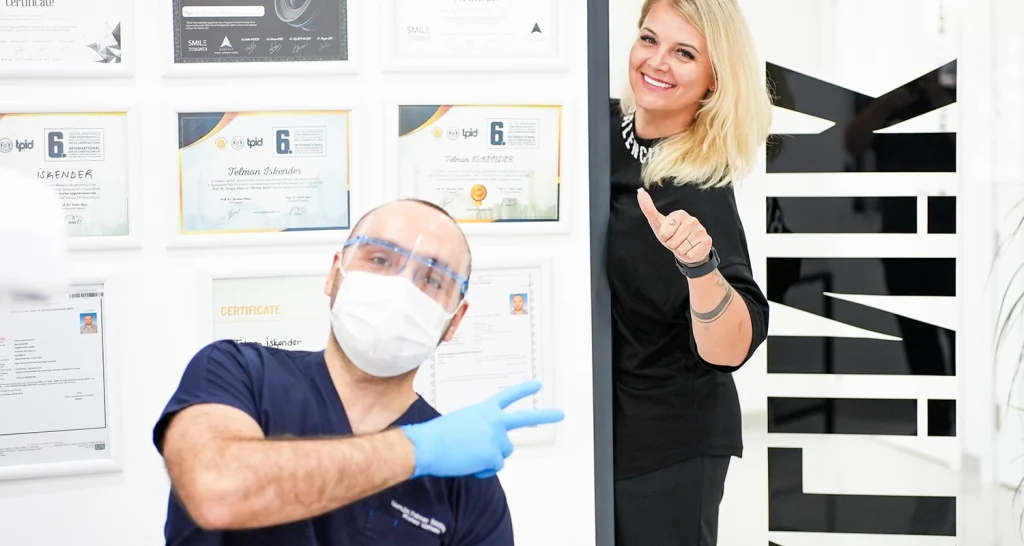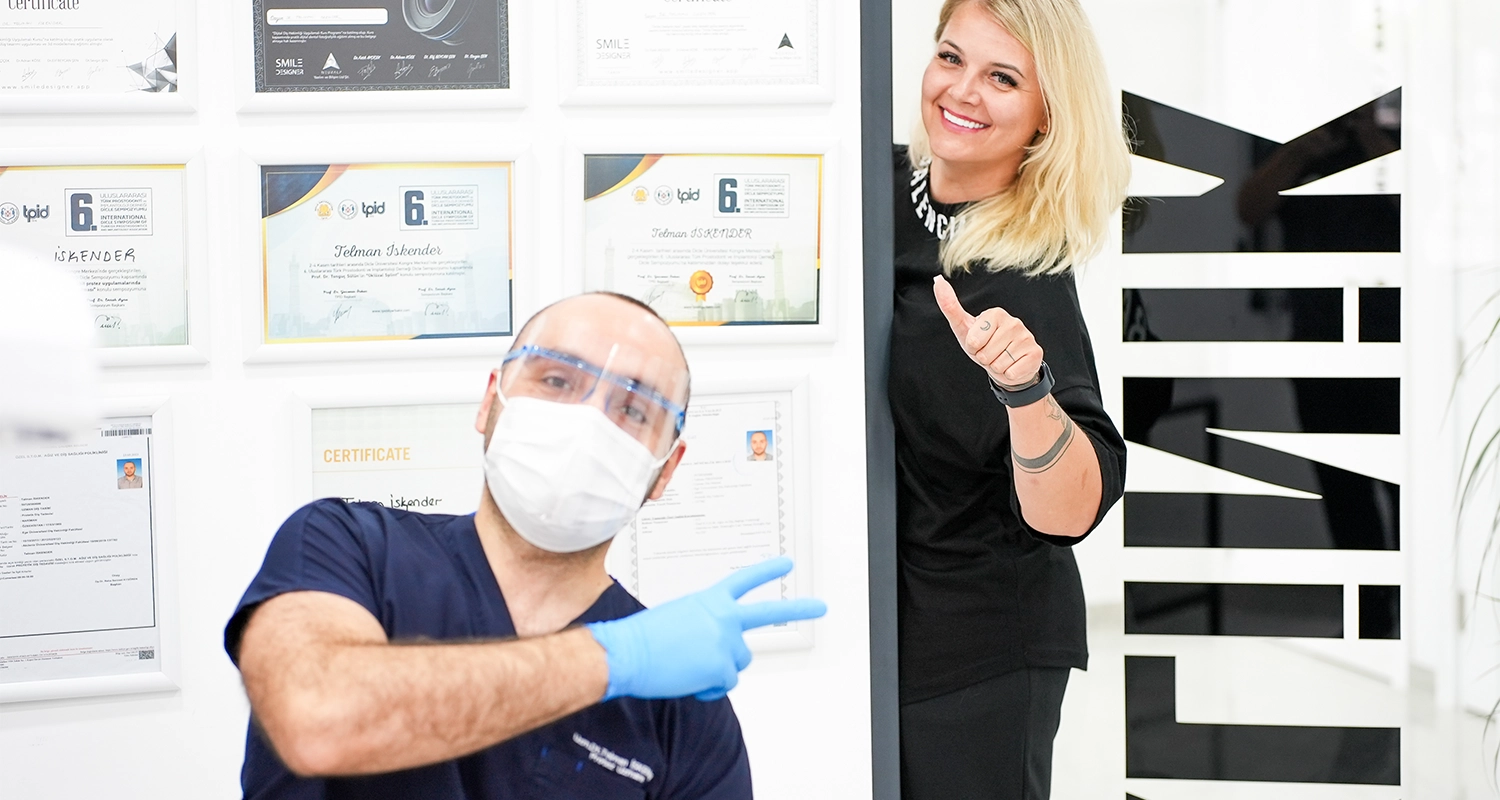Normal and Surgical Extractions of Teeth
Steps to a Healthy Mouth
Dental health plays a critical role in our overall body health. However, sometimes teeth may need to be extracted for various reasons. In this article, we will take a detailed look at normal and surgical extractions of teeth and examine the steps taken for a healthy mouth.

What is Tooth Extraction?
Tooth extraction is the process of removing a tooth from the mouth for various reasons. Tooth extraction may often become necessary due to conditions such as severe tooth decay, trauma, problems in the jaw structure or tooth emergence disorders. This procedure is carefully planned and performed by dentists.
The Importance of Normal and Surgical Extractions
Normal Tooth Extraction
Normal tooth extraction is usually reserved for cases where the tooth is on the surface and can be easily removed by the dentist using specialised instruments. This method is usually preferred in cases such as tooth decay, traumatic damage or the need for orthodontic treatment.
Surgical Tooth Extraction
Surgical tooth extraction is performed when the tooth is in the jawbone or under the gum. These situations usually apply to impacted teeth, tooth emergence disorders or teeth stuck in the jawbone for various reasons. Surgical extraction is a more complex procedure that requires the dentist to use surgical skills and modern technological tools.
Tooth Extraction Procedure and Its Importance
Both types of extraction are important for oral health. Removing a decayed or damaged tooth prevents potential damage to surrounding tissues and protects other healthy teeth in the mouth. In addition, surgical extractions allow effective treatment of impacted teeth, jawbone problems and other oral problems.
Normal Tooth Extraction: Examination and Assessment
Determining the Need for Tooth Extraction
Tooth extraction for a healthy mouth may often be required as a result of various conditions. These conditions may include:
Serious Decay or Damage: If the tooth is decayed or severely damaged, the dentist will assess the need for extraction. In this case, if it is not possible to repair the tooth, extraction may be preferred.
Gum Diseases: Gum diseases can affect the gums and cause tooth extraction. The dentist may recommend extraction to deal with gum problems.
Orthodontic Causes: Tooth extraction may be required for orthodontic treatment. The dentist may recommend extraction to correct the tooth alignment or to adjust the jaw structure.
Incorrect tooth eruption: In some cases, the dentist recommends extraction because the tooth has erupted in the wrong position. This applies to situations where the tooth can damage other teeth or affect the jaw structure.
X-ray and Imaging Techniques
Before deciding on tooth extraction, the dentist usually performs a detailed assessment using x-rays and imaging techniques. These techniques are used to assess the following issues:
Tooth Structure: The degree of decay, extent of damage and root structure of the tooth are determined by X-rays.
Surrounding Tissues: The condition of the gums, jaw bone and other tissues around the tooth is evaluated.
Tooth Exit Location: The exit site of the tooth and the condition of other teeth around it are examined.
Potential Complications: Potential complications that may arise during tooth extraction are determined in advance and precautions are taken if necessary.
The examination and assessment process enables the dentist to gain a comprehensive understanding of the patient’s oral health. Based on this information, the tooth extraction procedure is planned and the patient is given the necessary information. The tooth extraction procedure is performed with care to maximise patient comfort and prevent possible complications.
Local Anaesthesia Application: A Painless and Comfortable Experience
During the tooth extraction procedure, it is important to provide a painless experience and maximise the patient’s comfort. For this purpose, local anaesthesia is used. Local anaesthesia is a pain relief method applied to the area of the tooth to be extracted. Thanks to this method, patients go through the tooth extraction procedure with minimal discomfort.
Local anaesthesia includes the following steps:
Topical Anaesthesia: A topical anaesthetic gel is first applied to the application area of the gum. This ensures that the injection is felt less.
Local Anaesthetic Injection: An injection is made into the gum, around the tooth to be extracted. This injection temporarily numbs the nerves in the area.
Waiting for the effect of anaesthesia: The effect of the anaesthesia is waited. This process usually takes a few minutes.
With the completion of these steps, patients do not feel pain or discomfort before starting the tooth extraction procedure. Local anaesthesia is an essential step for a successful tooth extraction procedure by ensuring effective communication and cooperation between dentist and patient.
Duration of Loss of Sensation after Anaesthesia
The effect of local anaesthesia usually lasts for several hours. During this time, patients experience a loss of sensation in the extraction area. This is important so that the patient does not feel pain or discomfort. However, painkillers may be needed after the loss of sensation has disappeared. Regular use of painkillers recommended by the dentist increases patient comfort and positively affects the healing process.
Tooth Extraction Procedure: Extraction Stages According to Applied Techniques
The tooth extraction process consists of different stages depending on the techniques applied. These stages can be listed as follows:
Classic Tooth Extraction: The dentist removes the tooth from the tooth bed using a special clamp or lifter.
Rotary Tooth Extraction: The dentist can use the technique of pulling the tooth by rotating it. This technique allows the tooth to come out more easily.
Split Tooth Extraction: The dentist may remove the tooth by splitting it. This is a technique used especially for cracked or broken teeth.
Each technique is chosen depending on the condition of the tooth to be extracted and the needs of the patient. When determining the appropriate technique, the dentist considers the patient’s comfort and the effectiveness of the extraction procedure.
Fast and Effective Shooting Process
Tooth extraction is usually performed quickly and efficiently. Depending on the technique applied and the condition of the tooth, the extraction process can vary from a few minutes to 20-30 minutes. A fast and effective extraction process saves the patient’s time and positively affects the post-extraction healing process.
Stitches and healing: Stitches when necessary
After tooth extraction, stitches can be applied if necessary to close the cavity formed at the extraction site and to support the healing process. Stitches are usually made of dissolvable materials and dissolve spontaneously over time. This allows the patient to have a comfortable healing process without having to remove or have the stitches removed.
Recovery Process and Recommendations
The healing process after tooth extraction may vary depending on the patient’s compliance with the treatment and how faithful he/she is to the doctor’s recommendations. Factors affecting the healing process can be as follows:
Oral Hygiene: Keeping the extraction site clean and free from infection accelerates the healing process.
Pain Control: Regular use of painkillers recommended by the doctor provides pain control.
Diet and Nutrition: Eating soft and cold foods in the first days reduces the risk of damage to the extraction site.
Doctor Check-ups: Regular attendance at scheduled check-up appointments is important to monitor the healing process and prevent possible complications.
By following these steps, patients can minimise possible post-extraction discomfort and have a healthy healing process. Compliance with the dentist’s recommendations supports a successful post-extraction recovery.
A tooth extraction procedure that passes through these stages includes basic steps to increase patient satisfaction and a healthy mouth. When the patient complies with the dentist’s recommendations, the tooth extraction procedure is usually completed smoothly and contributes to the maintenance of oral health.

Surgical Tooth Extraction: Steps to a Healthy Mouth with Advanced Techniques
Examination and Imaging
Surgical tooth extraction may become necessary due to various conditions. To determine these situations, the dentist first assesses the following factors:
Impacted Teeth: Surgical extraction may be necessary if the tooth is stuck in the jawbone or has not come out sufficiently.
Tooth Location: Surgical extraction is considered if the origin or location of the tooth is at a point that cannot be reached by normal extraction methods.
Jawbone Condition: The jawbone structure may make it difficult to remove the tooth. Surgical extraction addresses these situations.
3D Imaging Techniques
3D imaging techniques provide the dentist with detailed information prior to extraction. These techniques provide detailed images about the position of the tooth, the condition of the jawbone and the surrounding tissues. In this way, the dentist can create the most appropriate plan for surgical extraction.
Surgical Extraction Techniques: Surgical Approaches According to the Location of the Tooth
Surgical extraction techniques are determined depending on the location, position and condition of the tooth. Prominent surgical approaches include:
Apical Resection: Removal of the root tip of the tooth is used to preserve the surrounding tissues.
Removal of Cystic Stains: Cysts are removed from the jawbone during surgical extraction.
Jawbone Correction: If there is a deformity in the jawbone, correction procedures can be performed during surgical extraction.
Surgical Procedures Depending on Jaw Bone Condition
Surgical procedures related to the condition of the jawbone involve correcting or reinforcing the jawbone during extraction. These procedures aim to prevent complications by focussing on the health of the jawbone.
Local Anaesthesia and Sedation if necessary
Local anaesthesia is used to improve patient comfort during surgical tooth extraction. At the same time, sedation may be preferred if necessary to reduce patient stress and provide a comfortable experience.
Surgical Anaesthesia and Side Effects
Surgical anaesthesia can be used in addition to local anaesthesia. This allows the patient to lose consciousness, providing a more comfortable surgical experience. However, surgical anaesthesia can have some side effects, so a detailed discussion with the doctor should take place before considering this option.
Care After Tooth Extraction
After a surgical tooth extraction, special care at the extraction site is important. This care may include the following elements:
Cold Compress Application: Cold compress can be applied to the extraction area to reduce swelling and pain.
Medication Use: Painkillers recommended by the doctor and antibiotics, if necessary, should be used regularly.
Diet Control: Eating soft and cold foods in the early days reduces the risk of damage to the extraction site.
Controls in the Recovery Process
Regular check-ups after surgical tooth extraction are important to follow the healing process and prevent possible complications. During these check-ups, the dentist evaluates the patient’s recovery status and updates the treatment plan if necessary.
Surgical tooth extraction is a procedure that requires advanced techniques and special care. When the patient complies with the dentist’s recommendations, this procedure is usually completed successfully and contributes to the maintenance of oral health.

